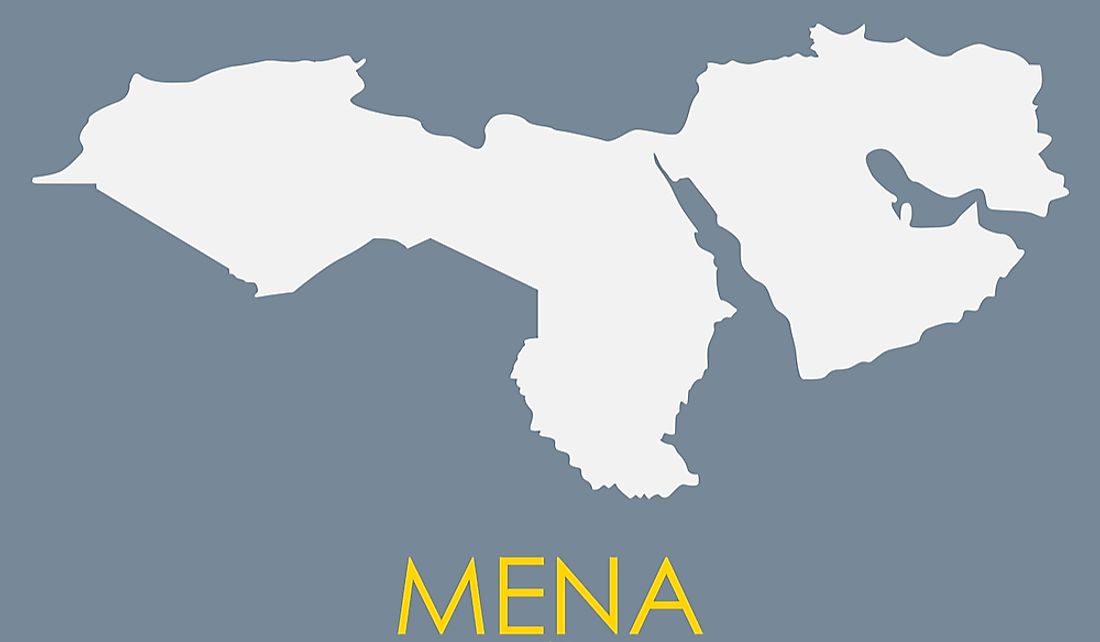What Are The MENA Countries?

MENA is an acronym for the Middle East and North Africa region, it is popularly used by academic, economic, social and international organizations. The MENA region is sometimes known as the Arab World or the Greater Middle East. There are 19 countries generally included as part of the MENA countries. A further 16 countries are sometimes included.
Regional Background
The term “Middle East” was coined in the 19th century to refer to the transcontinental area between southwest Asia and North Africa. It was Eurocentric and commonly used by the Western World. However, the composition of countries in the Middle East remains contentious even to date. To clear the ambiguity, the World Bank and the United Nations began using the term “Middle East and North Africa” to refer to the region spanning horizontally between Iran in the east to Morocco in the west. The second Bush administration coined the word “Greater Middle East” to refer to the entire Muslim-majority nations including Iran, Pakistan, and Turkey. While MENA is inclusive of Iran, it does not include Pakistan, Turkey, or Afghanistan. The boundaries of MENA is more geographic rather than social or religious.
Countries of MENA
There are 19 countries that are generally considered part of the MENA region. These are Algeria, Bahrain, Egypt, Iran, Iraq, Israel, Jordan, Kuwait, Lebanon, Libya, Morocco, Oman, Palestine, Qatar, Saudi Arabia, Syria, Tunisia, United Arab Emirates, and Yemen. A further 16 countries are sometimes included depending on usage. These are Afghanistan, Armenia, Azerbaijan, Chad, Comoros, Cyprus, Djibouti, Eritrea, Ethiopia, Georgia, Mali, Mauritania, Niger, Somalia, Sudan, and Turkey. The population of the region is at least 381 million or 6% of the world’s population. Egypt (94 million), Iran (80 million), and Algeria (40 million) are the most populous countries in the region.
MENA Countries by GDP
The GDP of MENA is about 3.3 trillion dollars representing 4.5% of the global GDP. In addition to the small GDP, the region also has a relatively small population. A majority of the people live in middle-income states that produce 60% of the world’s oil and 45% of the natural gas. Saudi Arabia is the largest economy with a GDP of $740 billion followed by Iran ($333.6 billion), the United Arab Emirates ($382 billion) and Egypt ($249 billion).
Languages of the MENA Region
The dominant language in the MENA region is Arabic. It is spoken in all the countries except in Israel where Hebrew is a dominant language. Islam is the dominant religion except in Israel where Judaism is the de facto religion.
Is Turkey a part of the MENA Region?
Turkey lies in between Europe and the Middle East. Much of the MENA region was once under the Ottoman Empire and therefore maintains close ties with Turkey. Modern Turkey is a popular destination for Arabs traveling for a holiday and investing in real estate. However, Turkey also has equally close relations with Europe and was at one point it was the capital of the Eastern Roman Empire. The country has a pending application to join the European Union, and if successful, it will be considered more of a European country rather than an Arab state. Turkey is considered part of the MENA region in the broader context, but it is occasionally omitted in most definitions.
List of MENA Countries
| Rank | Common MENA Countries | Sometimes Included |
|---|---|---|
| 1 | Algeria | Afghanistan |
| 2 | Bahrain | Armenia |
| 3 | Egypt | Azerbaijan |
| 4 | Iran | Chad |
| 5 | Iraq | Comoros |
| 6 | Israel | Cyprus |
| 7 | Jordan | Djibouti |
| 8 | Kuwait | Eritrea |
| 9 | Lebanon | Ethiopia |
| 10 | Libya | Georgia |
| 11 | Morocco | Mali |
| 12 | Oman | Mauritania |
| 13 | Palestine | Niger |
| 14 | Qatar | Somalia |
| 15 | Saudi Arabia | Sudan |
| 16 | Syria | Turkey |
| 17 | Tunisia | |
| 18 | United Arab Emirates | |
| 19 | Yemen |











